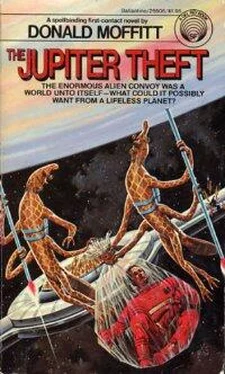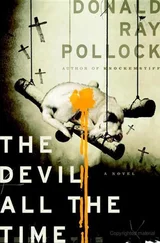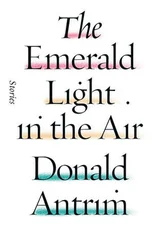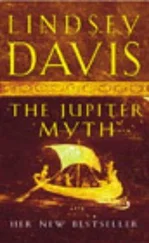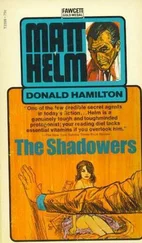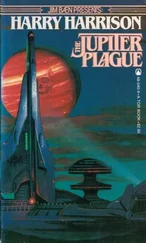“They’re still transmitting,” Jameson said. “We’ll play it at twice real time till it catches up.” He pressed the button that would alert Sue Jarowski.
Random flashes of light appeared on the screen. That was when the ship’s laser ranging retroreflector first noticed that it was being hit by coherent light and locked in on the laser beam from the Moon transmitter. The light it bounced back served both as a ready-to-receive acknowledgment and as a guide to the sender for more accurate aim—though multiple redundancy of the digital pulses meant that the ship’s computers could reconstitute even a badly scattered message. At the speed of light, the back-and-forth exchange would have taken the better part of an hour—mercifully condensed now to a few seconds by a very conservative computer that wasn’t taking any chances of leaving out any information content.
Now the message itself began:
urgent urgent urgent
subject jovian meteorological phenomena
specific reference cloudtop disturbance equatorial region
source sagan reflector farside
optical images beginning 0019 53 07 gr stored for transmission
to follow
action action action
verification requested
specific verification direct optical observation
message follows
What followed was a lot of astronomical gobbledygook to the effect that the 500-inch reflector on the Moon had observed an inexplicable vortex forming in the upper Jovian atmosphere. It was different from the usual eddies and swirls caused by high-speed turbulence in Jupiter’s equatorial region. It was a whirlpool-like disturbance larger than Earth, and almost as large as the Great Red Spot. Coordinates with respect to other atmospheric features followed in lengthy detail.
Ruiz fidgeted, occasionally using his lightpad to do some figuring. He stared balefully at the screen, fingers drumming on the armrest of his chair. Finally he exploded.
“Why don’t they give us the pictures instead of wasting time with all this slush? It’s that jackass Kerry! ‘Verification requested!’ What does the fool expect us to see at almost two hundred million miles with the ship’s telescopes that he can’t see at less than three times the distance with the five-hundred-inch mirror?”
“It should only be a few more minutes, Dr. Ruiz,” Maybury said timidly.
Ruiz subsided a little. “Damned posturing idiot,” he grumbled. “I never should have approved his second tour of duty. I should have shipped him back to Earth when I had the chance.” He lifted a grizzled head. “I won’t tell him what I think of him, Commander. I don’t want to burn out your laser sender.”
Jameson grinned. “Mizz Maybury’s right, Doctor. Nothing to do but wait it out. Your pictures are probably somewhere past the asteroid belt by now, anyway. The fellows at Farside probably knocked off for a beer a half-hour ago.”
“Here it comes now,” Dr. Chu said. They all leaned forward to look at the screen. Down below, curious faces were looking up at the balcony.
Bit by bit the computer began to assemble the first picture. At more than five hundred lines to the inch, it was quite detailed. The color, corrected by a digital code nestled among the billions of pulses, was vivid. It began at screen left and unrolled until, seconds later, the screen was filled. The first frame was the only one they saw entire. After that, new frames were transmitted at the rate of two per second, peeling on from the left, so that there was an illusion of flickering motion.
It was overwhelming.
Jameson heard Maybury sigh, “O-o-oh!” Chu sucked in his breath sharply. Ruiz’s breath came in a ragged wheeze.
Jupiter filled the screen, a great swollen luminescent ball, striped in orange-reds and yellows. The image wasn’t holo—couldn’t be, even with high-density laser transmission—but somehow it didn’t matter. Looking at that fantastic orb, they could sense its tremendous bulk, feel the existence of a mass that could swallow up the entire Earth with scarcely a splash, even with nothing to scale it by.
Jupiter had a mole, a malignant black dot at rest on the rushing ocher cloudtops. The shadow of one of its moons, probably Io. That black speck was probably a couple of thousand miles across.
And there, across the cloud decks, was the Great Red Spot, a bloody egg that was twice the width of Earth. An immense eddying froth of organic molecules that had held its oval shape for the four hundred years that mankind had been looking at Jupiter through telescopes.
But no more.
It was sending out long reddish streamers, twisting threads that had to be tens of thousands of miles long, like a living thing bleeding underwater. The streamers stretched across the multicolored cloud bands and disappeared around the curvature of the planet, forming a twisted belt at the equator.
“ Ya i! ” Chu gasped. He was half out of his chair, his hands gripping the arms. Ruiz was motionless, staring at the screen with fierce concentration.
They watched in frozen silence for long minutes. Then they saw what was causing it.
“There’s our ‘meteorological phenomenon,’ ” Ruiz snorted. “Kerry’s ‘cloudtop disturbance.’ ”
It was sweeping around the curve of the planet, moving at what seemed a crawling pace, but actually traveling at what had to be more than a million miles per hour. At this rate it would circle Jupiter’s 89,000-mile diameter in something like fifteen minutes.
It was an unimaginably huge vortex of churning clouds. As it progressed along the equator it deformed the colored bands of clouds into an elongated eye-shape, with itself at the center. And now they could see that it was gathering a skein of those bloody streamers from the Red Spot around itself, dragging them halfway around the planet.
“Maybury!” Ruiz said sharply. “Is Pierce recording?”
She looked startled. “Yes, Dr. Ruiz,” she said. “I signaled him before we left.”
Jameson briefly considered calling Boyle, but decided not to wake the skipper up. All this had happened hours ago anyway. Boyle and Hsieh could see it in replay.
The tremendous whirling funnel was overtaking the Red Spot. It distorted the shape of the oval feature, making it bulge northward. Twisting ribbons of red stretched in a bloodshot spindle between the two loci.
A great gob of matter, the size of a continent, detached itself from the bulging Spot and was sucked into the whirlpool.
“God help us,” Ruiz breathed.
The sudden infusion of red nitriles briefly colored the gigantic maelstrom. Jameson tried to grasp the scale of the colossal events he was witnessing, and found he couldn’t. Those whipping shapes winding themselves like torn confetti around that spinning vortex were bigger than worlds, and they were covering vast distances in fractions of a second. It was a violence that would have shorn Earth in the blink of an eye and left it a polished ball, glowing with the heat of friction. Now, as Jameson watched, the blurred spirals of cloud were turning pink, showing that ulcerous pit more clearly against the face of the planet.
Something was growing out of it.
“They’re doing it to Jupiter, too,” Ruiz whispered.
Jameson had no time to reflect on what Ruiz meant. The spectacle he was seeing held all his attention. The raging vortex had marched from horizon to horizon, and he had an oblique view of it as it approached the edge of the planet.
He could make it out now against the engulfing darkness: a tenuous pillar of cloud extending thousands of miles into space in a coiling loop. The roots of that spectral rope were stained pink with colored hydrogen. It became more transparent, insubstantial, as it ascended its twisting path, narrowing all the while until it ended as a gossamer thread somewhere inside the orbit of Jupiter V.
Читать дальше
